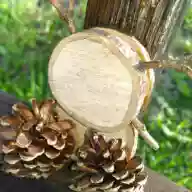[2025] Bon Odori songs every kid knows! A roundup of fun festival tunes
Bon Odori, a quintessential summer tradition! Festival stalls sell games and delicious food, making it hugely popular with kids.
Here, we’ll introduce a variety of wonderful Bon Odori songs—from tunes children already know to unique arrangements of J-pop and Western music.
Lots of new songs are appearing, too.
Don’t worry if you’re not sure about the dance steps—what matters is having fun.
Kids and adults alike, be sure to join in Bon Odori and make some great memories!
- Popular Festival Songs Ranking [2025]
- [Let's Enjoy Japanese Festival Songs!] Songs about festivals. Famous songs related to festivals.
- [2025] A classic song themed around summer festivals. A song of summer memories.
- Japanese ondō: a seasonal tradition everyone can enjoy.
- [Childcare] Summer songs: Full of fun! Summer nursery rhymes & finger-play songs
- Games that liven up festivals. Ideas that children can enjoy.
- Get pumped with popular songs from “Okaasan to Issho”! A collection of timeless tunes everyone will want to sing together
- Nursery Rhyme Popular Song Rankings [2025]
- [2025] A roundup of crowd-pleasing gag/novelty songs for performances and skits
- Recommended summer songs for people in their 70s: A collection of nostalgic summer tunes [2025]
- Recommended summer songs for people in their 90s: A collection of Showa-era summer tracks [2025]
- Classic summer hits that are easy to sing at karaoke. Recommended popular songs [2025]
- [2025] Liven Up Your Party! A Roundup of the Newest J‑Pop Hits and All-Time Crowd Favorites
[2025] Bon Odori songs every child knows! A fun roundup of festival tunes (111–120)
festival

The heartfelt wishes for a bountiful harvest and a great catch convey the sentiments of traditional Japanese culture, and they also help children understand the importance of appreciating nature’s blessings, making these lyrics very good.
They are full of vitality and convey the power of festivals, which helps children dance with confidence.
This is a recommended song for summer festivals and Bon dances, where people of all ages—from the elderly to children—can enjoy dancing together across generations.
Ginza Kan-kan Girl

Ginza Kankan Musume is a classic song with a lively rhythm, a fun melody, and lyrics celebrating a free and independent woman.
Set in Ginza, the symbol of postwar recovery, the image of the Kankan girl dashing around the city in sandals is glamorous and full of energy.
Released in 1949 and beloved as the theme song of the film of the same name, it stands as one of composer Ryoichi Hattori’s signature works.
It’s the perfect tune for savoring a Showa-retro vibe at summer festivals and other events.
If everyone sings and dances along, it’s sure to be a hit!
Kitaro Ondo

The GeGeGe no Kitaro series is renowned nationwide.
It’s a work known across a truly wide range of generations, regardless of age or gender.
The series’ festival dance song is “Kitaro Ondo.” It’s sung by Keiko Toda, the voice actor who played Kitaro in the third series that began airing in 1985.
Toda also voices Anpanman, so many small children might recognize her voice and think, “Oh!” It’s a slightly spooky yet fun song that brings the world of GeGeGe no Kitaro to life.
Kagoshima Ohara-bushi

It is a folk song handed down in Kagoshima Prefecture.
Although there are various theories about its origin, it is said to have begun being sung in the early Edo period.
In 1933, a recording by Kiyozō Shinbashi, a native of Kagoshima, helped it gain nationwide popularity.
Later, parts of it were quoted in the Tokyo Ondo.
In addition, at the Ohara Festival, which began in 1949 to commemorate the 60th anniversary of Kagoshima’s incorporation as a city, the Ohara Bushi came to be performed as a dance.
Since 2011, it has also been used as the arrival and onboard melody for trains at Kagoshima-Chuo Station.
Eisa

A traditional performing art danced during the Obon season in Okinawa Prefecture and on Amami Ōshima in Kagoshima Prefecture, it involves parading through neighborhood streets while dancing to songs and musical accompaniment to welcome ancestral spirits.
It is said to have originated around 1600 in the Ryukyu Kingdom from a practice called “Nembutsu-nyā,” and later changed with the times.
Before the war, the mainstream style was hand dancing with a tenugui cloth wrapped around the head, but after the war—particularly in Okinawa City and other parts of the main island—the style changed significantly, leading to the current form of parading while beating drums.
Kyutama Ondo

The Kyutama Ondo! from the Super Sentai series Uchu Sentai Kyuranger features choreography by Lucky Ikeda.
It was created with the hope that children and their parents would make memories together.
Since it’s a popular TV series, everyone can learn to dance and have fun.
The dance moves are a bit complex, so some practice may be needed.
Both boys and girls can enjoy dancing together.
Kawachi Otoko-bushi

This is the biggest hit by enka singer Mitsuko Nakamura, released in 1989 (Heisei 1).
Her song “Kawachi Otoko Bushi” gradually gained a reputation and became a hit, selling 80,000 copies in just six months in Osaka alone.
Later, Mitsuko Nakamura went on to appear multiple times on NHK’s Kōhaku Uta Gassen.






